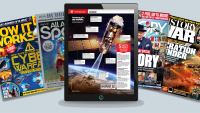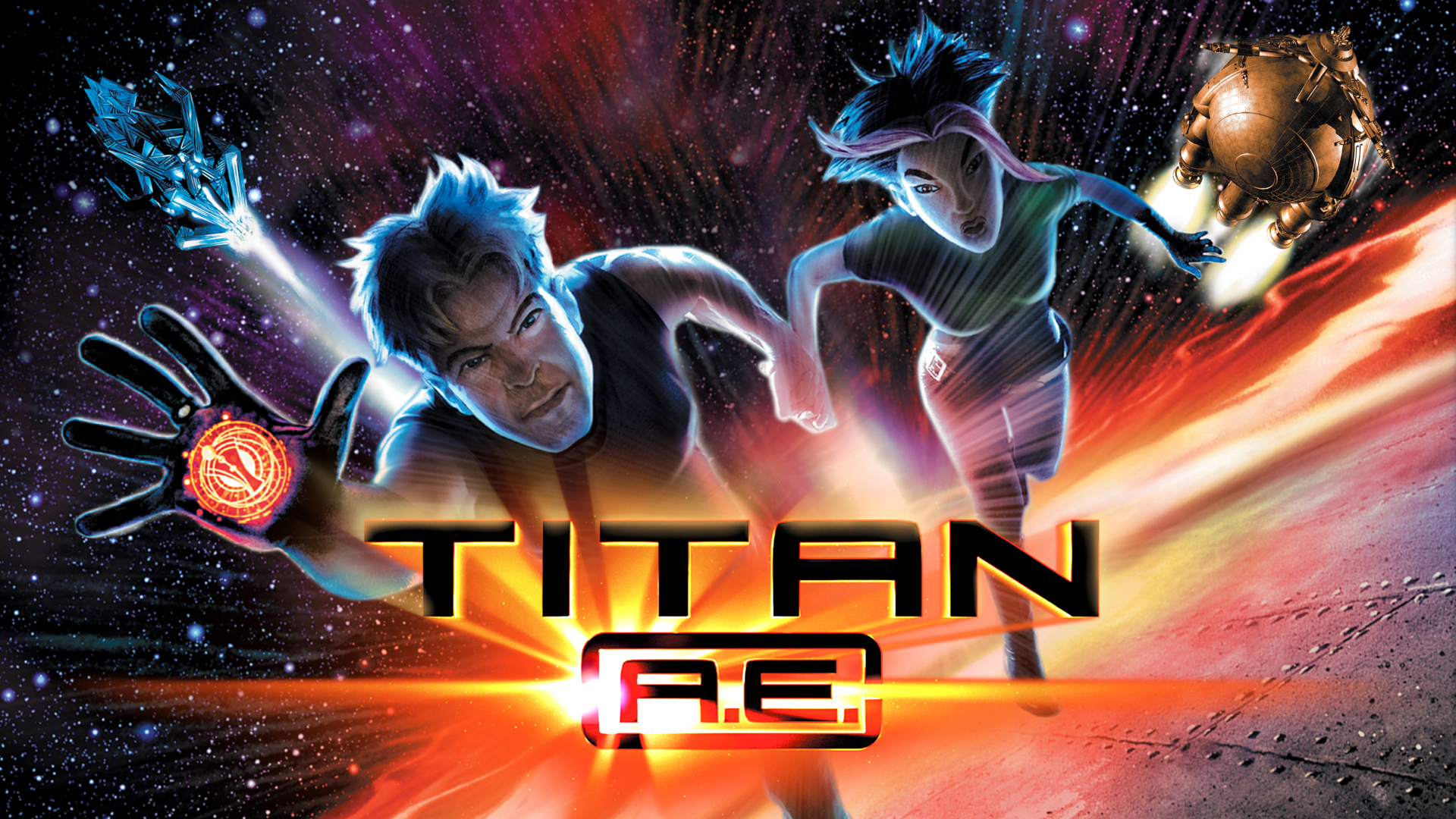Astronauts to ride NASA-adorned Tesla Model X to SpaceX launchpad
The first NASA astronauts to launch atop a Falcon 9 rocket will have more than one new ride designed by SpaceX CEO Elon Musk.
Bob Behnken and Doug Hurley, who will be the first to fly on a SpaceX Dragon to the International Space Station, will arrive at their launchpad in a Tesla Model X SUV. In addition to helming the commercial spaceflight company, Musk also leads the electric car company.
NASA revealed the SpaceX Model X on Wednesday (May 13), two weeks before the scheduled May 27 launch.
Related: SpaceX's Crew Dragon Demo-2 mission in photos
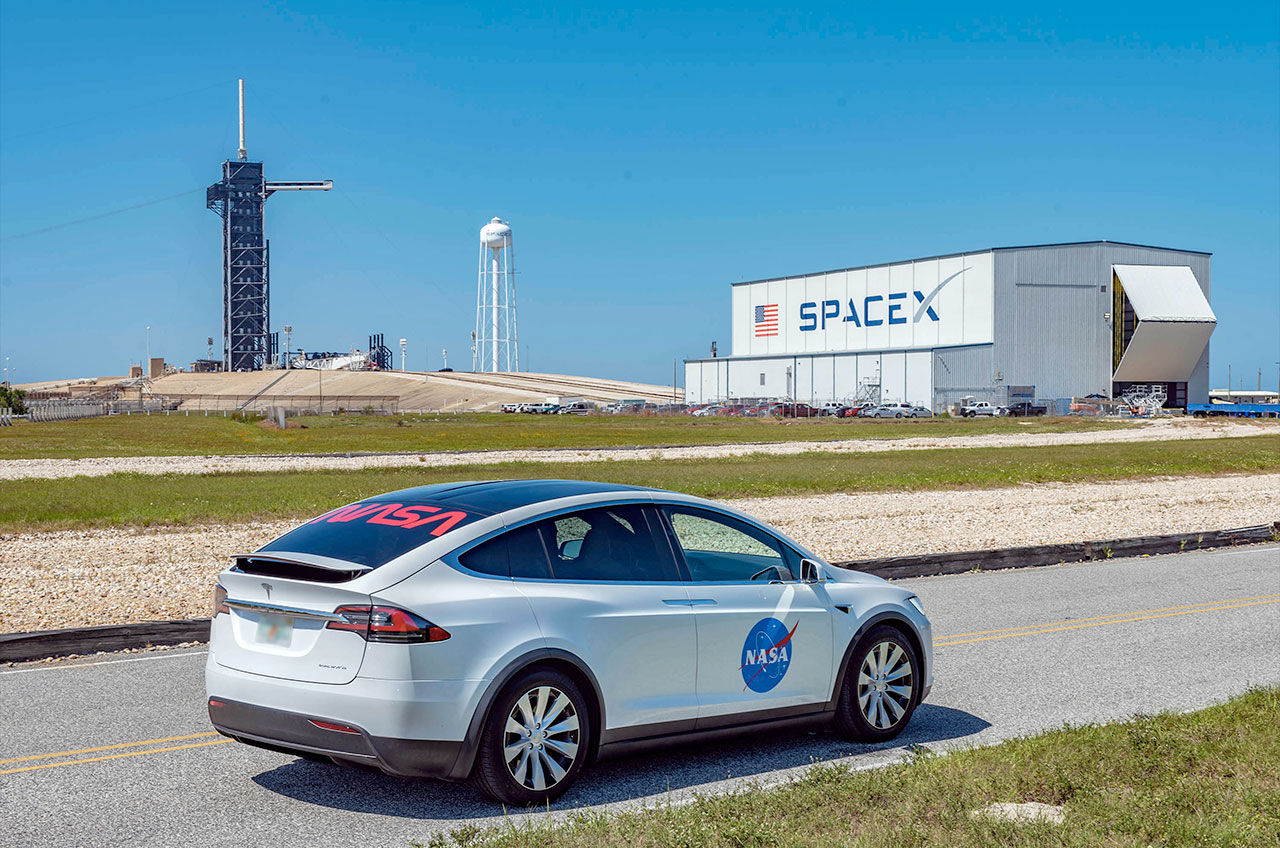
"Here's some Tesla news that everyone should love," NASA Administrator Jim Bridenstine posted on Twitter. "Check out the Model X that will carry Bob Behnken and Doug Hurley to the launchpad for the Demo-2 mission!"
The white SUV features decals of NASA's red, white and blue insignia, dubbed the "meatball," on its two front doors and the agency's resurrected logotype, the red "worm," across the top of its rear window. The Demo-2 Falcon 9 rocket will also be emblazoned with both NASA identifiers.

About three hours before launch, after donning their spacesuits, Behnken and Hurley will walk out of NASA's Neil A. Armstrong Operations and Checkout (O&C) Building at the Kennedy Space Center in Florida and climb into the backseat of the Model X through the car's falcon-wing rear doors. The all-electric SUV will then be used to drive them the 9 miles (14 kilometers) to Launch Complex 39A.
Get the Space.com Newsletter
Breaking space news, the latest updates on rocket launches, skywatching events and more!
The drive will mark the first time that NASA astronauts have taken a car to the launchpad to then leave Earth.
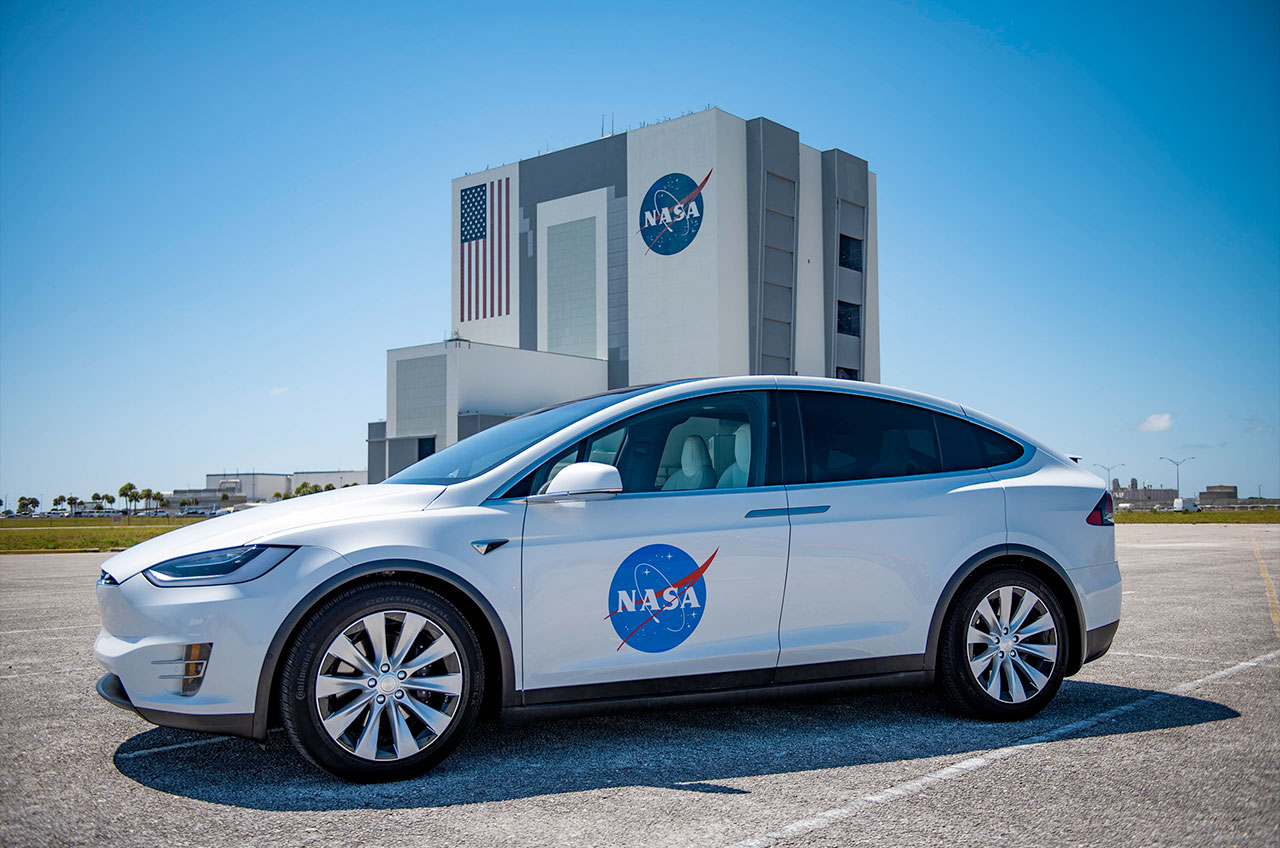
The original U.S. spacemen, the Mercury 7 astronauts, were transferred from a hangar to their waiting Redstone or Atlas rockets using a modified trailer pulled by a Reo Motor Company tractor. The Gemini astronauts suited up in a trailer near the launchpad and then rode a transfer van the short way to their Titan boosters.
The Apollo program introduced the first "Astrovan," in the form of a converted Clark Cortez motorhome. The white vehicle with a blue and red stripe and a large NASA "meatball" logo was used by moon-bound crews from 1968 through 1972, and then continued in service for the Skylab, Apollo-Soyuz and early space shuttle missions.
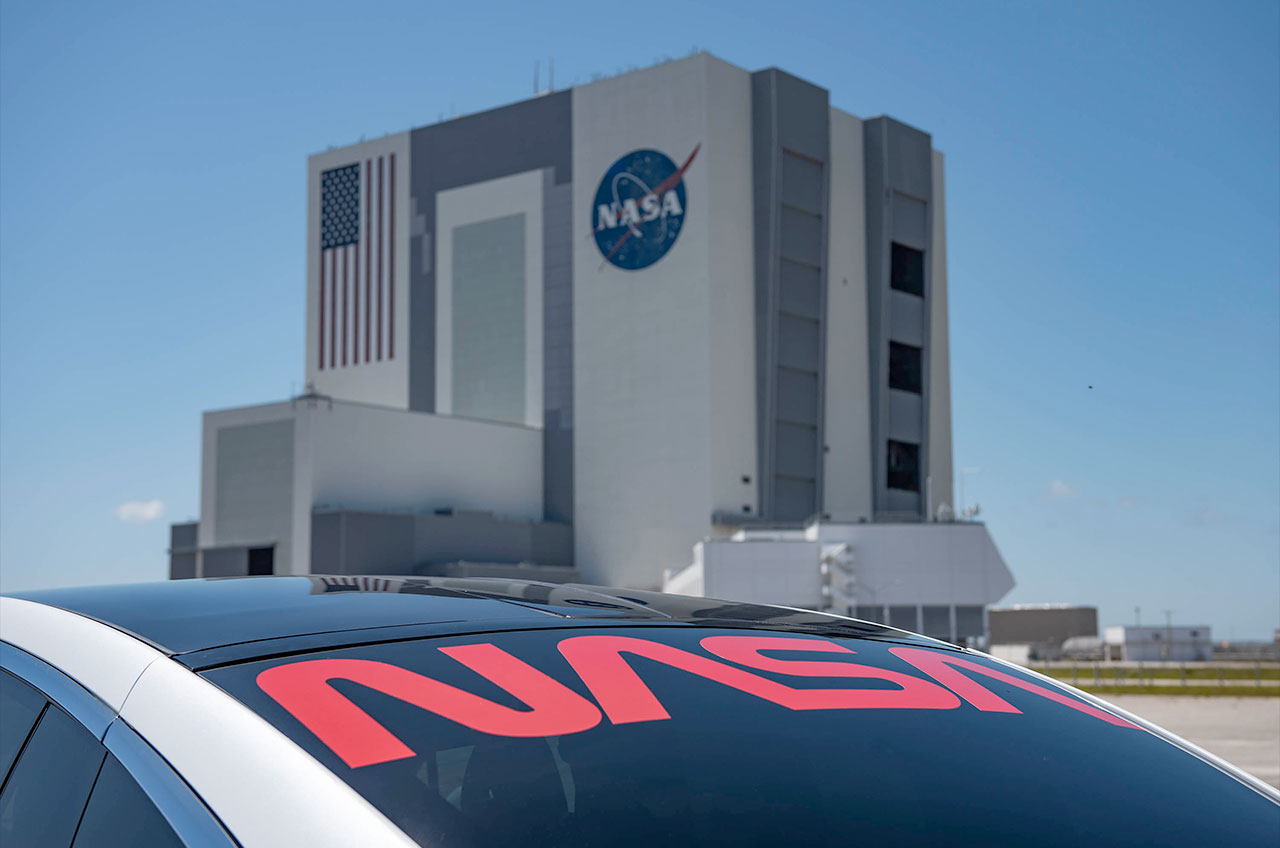
A new Astrovan was introduced in November 1983, with the ninth space shuttle mission. The modified Airstream Excella Motorhome sported a chrome body with a red, white and blue stripe, a large NASA meatball and enough room on board to accommodate the larger shuttle crews.
NASA's other commercial crew partner, the Boeing Company, also worked with Airstream to create the Astrovan II, a customized Airstream Atlas Touring Coach. Revealed in 2019, the new van is wrapped with graphics depicting the Boeing Starliner spacecraft that the van's riders will launch aboard to the space station.
SpaceX's Tesla Model X was previously seen in January, without its newly-applied NASA insignia decals, when it was used to drive Behnken and Hurley for a launch-day dress rehearsal.
The official use of the "meatball" and "worm" on the same vehicle marks a return to NASA's early-1980s livery. Since then, the space agency's rules for the retro logotype, if permitted at all, was that it never appear together with the insignia.
- Astronauts enter a routine quarantine for SpaceX Crew Dragon launch
- SpaceX's epic road trip photos: Starman rides a Tesla Roadster across space
- Tesla's new 'Cybertruck' has a bit of SpaceX's Starship for Mars in its bones
Follow collectSPACE.com on Facebook and on Twitter at @collectSPACE. Copyright 2020 collectSPACE.com. All rights reserved.
OFFER: Save 45% on 'All About Space' 'How it Works' and 'All About History'!
For a limited time, you can take out a digital subscription to any of our best-selling science magazines for just $2.38 per month, or 45% off the standard price for the first three months.
Join our Space Forums to keep talking space on the latest missions, night sky and more! And if you have a news tip, correction or comment, let us know at: community@space.com.

Robert Pearlman is a space historian, journalist and the founder and editor of collectSPACE.com, a daily news publication and community devoted to space history with a particular focus on how and where space exploration intersects with pop culture. Pearlman is also a contributing writer for Space.com and co-author of "Space Stations: The Art, Science, and Reality of Working in Space” published by Smithsonian Books in 2018.In 2009, he was inducted into the U.S. Space Camp Hall of Fame in Huntsville, Alabama. In 2021, he was honored by the American Astronautical Society with the Ordway Award for Sustained Excellence in Spaceflight History. In 2023, the National Space Club Florida Committee recognized Pearlman with the Kolcum News and Communications Award for excellence in telling the space story along the Space Coast and throughout the world.

